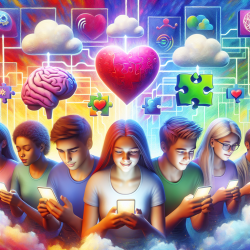Understanding Gamified CBT
Gamification involves incorporating game elements into non-game contexts to make activities more engaging. For CBT, this means transforming therapeutic exercises into interactive and enjoyable activities that young people are more likely to engage with. The research highlights the development of Quest - Te Whitianga, an app designed to teach CBT skills through a series of gamified activities and games.
Key Components of Quest - Te Whitianga
The app consists of several modules, each focusing on different CBT skills. These include:
- ReMind Island: A gratitude journal that encourages users to record positive experiences, promoting a shift from negative to positive thinking.
- ReLax Island: Relaxation and mindfulness activities designed to reduce anxiety and improve emotional regulation.
- ReEnergise Island: Behavioral activation tasks that help users plan and engage in activities that boost mood and well-being.
- ReThink Island: Exercises that teach the interaction between thoughts, feelings, and actions, helping users reframe negative thoughts.
- ReSolve Island: Problem-solving scenarios that enhance coping skills for stressful situations.
- ReLate Island: Interpersonal skills training through simulated conversations and social interactions.
Benefits of Gamified CBT
The gamified approach has several advantages:
- Increased Engagement: Gamification makes therapy more appealing, encouraging consistent participation.
- Enhanced Learning: Interactive elements help reinforce CBT principles, making them easier to understand and apply.
- Personalization: Customizable avatars and personalized feedback enhance the relevance and impact of the therapy.
Implementing Gamified CBT in Practice
Practitioners can adopt the principles of gamified CBT by integrating game elements into their therapy sessions. Here are some steps to get started:
- Use Technology: Incorporate apps like Quest - Te Whitianga into your practice to provide a structured, engaging way for young people to learn CBT skills.
- Encourage Regular Use: Motivate clients to use the app regularly by setting goals and tracking progress.
- Combine with Traditional Therapy: Use the app as a supplement to face-to-face sessions, enhancing the therapeutic alliance and providing additional support between meetings.
Encouraging Further Research
While the benefits of gamified CBT are promising, ongoing research is essential to refine these tools and maximize their effectiveness. Practitioners are encouraged to stay informed about the latest developments and contribute to the body of knowledge by sharing their experiences and outcomes.
Conclusion
Gamifying CBT represents a significant advancement in the delivery of emotional health treatment to young people. By making therapy more engaging and accessible, practitioners can help their clients achieve better outcomes. To read the original research paper, please follow this link: Gamifying CBT to deliver emotional health treatment to young people on smartphones.










